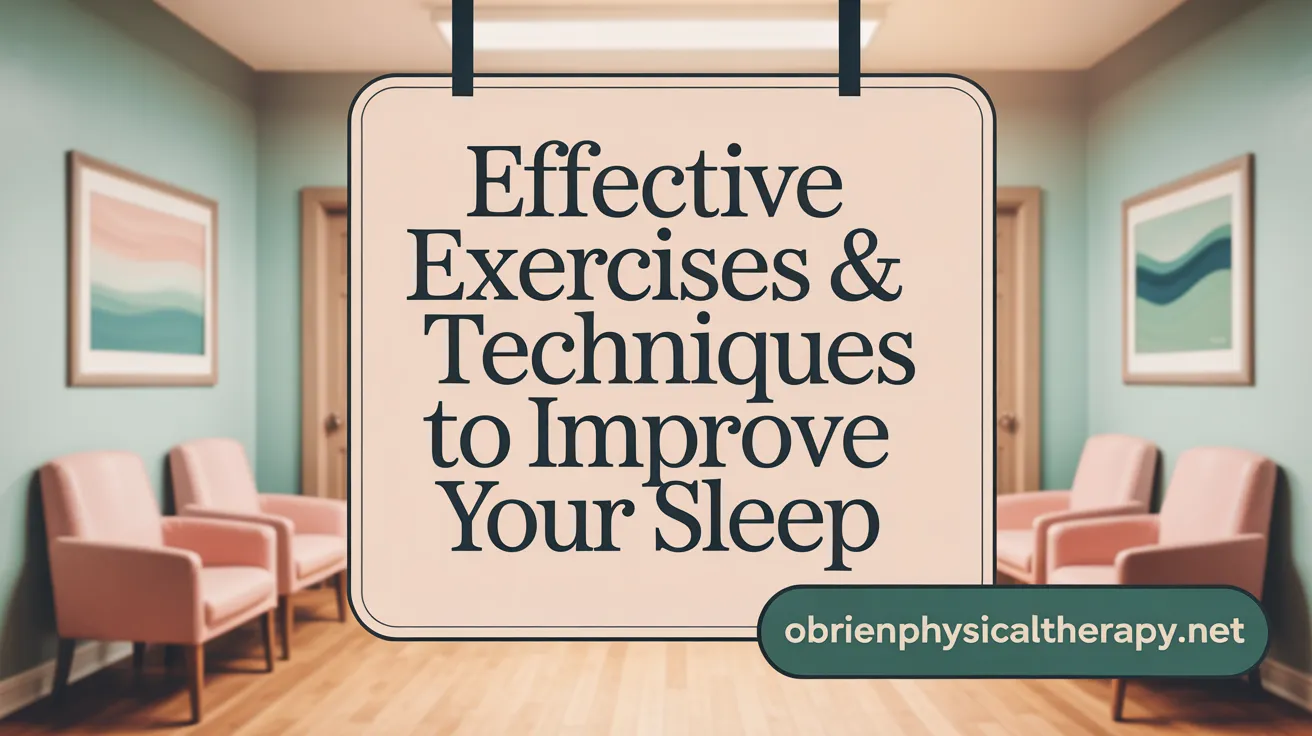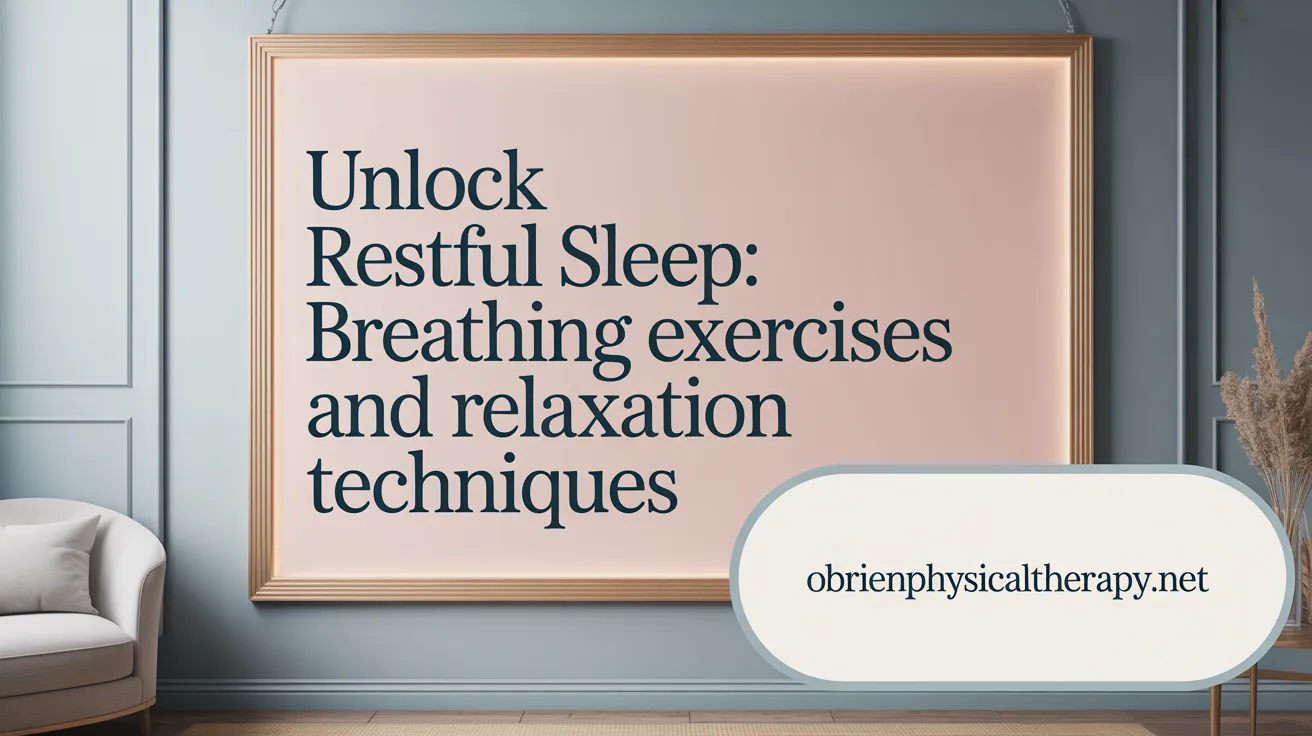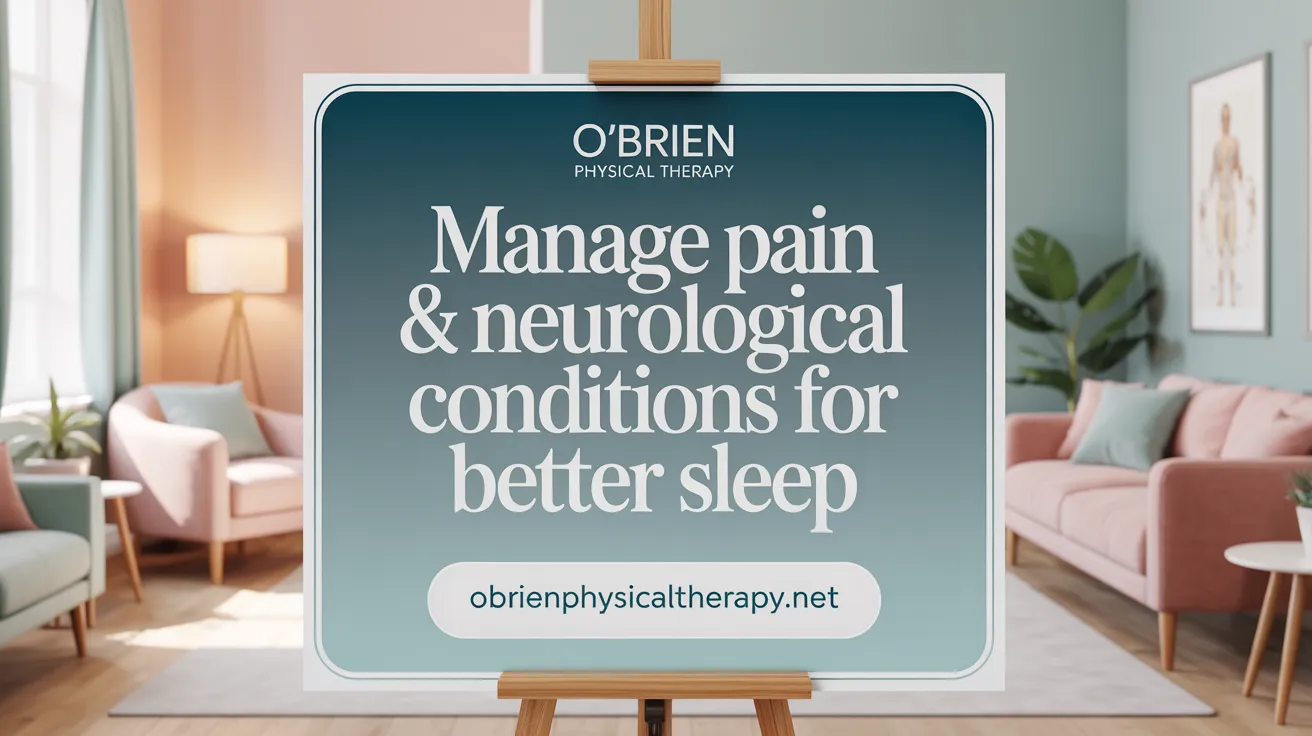The Vital Connection Between Physical Therapy and Sleep
Sleep is essential for physical health, cognitive function, and emotional wellbeing, yet millions struggle with poor sleep quality. Physical therapy offers practical strategies that go beyond movement rehabilitation to directly improve sleep. This article explores how tailored physical therapy techniques and lifestyle adjustments can promote deeper, more restorative sleep, supporting overall wellness.
How Physical Therapy Contributes to Better Sleep

How does physical therapy contribute to better sleep?
Physical therapy plays a significant role in enhancing sleep quality by directly addressing physical discomfort and pain that can hinder restful sleep. When pain from conditions like arthritis, fibromyalgia, back pain, or nerve issues interferes with falling or staying asleep, physical therapists develop tailored plans to reduce this pain. Techniques such as manual therapy, exercises, and modalities like ultrasound or TENS can decrease inflammation and muscular tension, easing discomfort.
In addition to pain management, physical activity is a core component of physical therapy that supports sleep regulation. Regular exercise stimulates the release of endorphins and helps increase melatonin production, both of which promote better sleep. Importantly, exercise sessions scheduled in the evening, especially those involving gentle stretching or aerobic activity, can help unwind the body and prepare it for restful sleep.
Physical therapy also aids in addressing other factors that impair sleep, such as limited mobility or poor posture. By improving physical function, therapy helps individuals adopt sleep positions that reduce discomfort and optimize comfort. This reduces the likelihood of waking through the night and encourages longer, deeper sleep phases.
Furthermore, managing stress and promoting relaxation are integral parts of physical therapy. Techniques such as deep breathing, progressive muscle relaxation, and mindful stretching activate the parasympathetic nervous system, which calms the nervous system and fosters relaxation before bed. Implementing a calming pre-sleep routine, guided by a physical therapist, can signal to the body that it’s time to sleep.
Physical therapists also evaluate and help optimize sleep environments. Recommendations might include choosing supportive mattresses and pillows, maintaining a cool room temperature between 60 and 67°F, and minimizing noise and light. Such environmental adjustments, combined with therapeutic exercises, create a conducive setting for quality sleep.
In summary, physical therapy contributes to better sleep through pain relief, promoting physical activity and relaxation, improving sleep environment setups, and regulating circadian rhythms. These combined benefits can lead to increased sleep duration, higher sleep quality, and reduced sleep disturbances.
| Aspect | Method | Benefit |
|---|---|---|
| Pain Management | Manual therapy, modalities like ultrasound | Reduces discomfort, eases falling asleep |
| Physical Exercise | Tailored routines, stretching, aerobic activity | Promotes sleep-inducing hormone production |
| Relaxation Techniques | Breathing exercises, muscle relaxation | Calms the nervous system, prepares for sleep |
| Environment Optimization | Mattress, pillow, room temperature | Enhances comfort for sleep |
| Circadian Regulation | Exposure to natural light, exercise timing | Synchronizes biological clock |
Optimizing these factors through physical therapy can significantly improve sleep quality, especially for individuals suffering from pain or mobility issues, and support overall health and wellness.
Effective Physical Therapy Techniques and Exercises for Sleep Enhancement

What are some effective physical therapy techniques to improve sleep quality?
Physical therapy offers several approaches to help improve sleep quality by directly addressing physical discomfort, relaxing muscles, and calming the nervous system. Personalized exercises such as gentle stretching, resistance training, and relaxation routines play a significant role.
For instance, targeted stretches like neck stretches, pigeon pose, or hamstring stretches performed about 30 minutes to an hour before bedtime can relieve tension and make it easier to fall asleep. Embedding deep breathing exercises or progressive muscle relaxation during these routines activates the parasympathetic nervous system, which encourages relaxation.
In addition, manual therapy and postural adjustments can help reduce pain or discomfort that might interfere with sleep. These may include massage, mobilization, or spinal adjustments tailored to the individual’s needs.
Therapists can also suggest modifications to sleep posture and environment, ensuring optimal spinal alignment and comfort. Combining these techniques with good sleep hygiene—such as maintaining a regular sleep schedule and creating a dark, cool bedroom—provides an effective approach for better sleep.
Overall, the integration of exercises, manual therapy, and environmental modifications within a comprehensive plan can greatly improve sleep duration and quality, especially for those experiencing musculoskeletal pain or discomfort that disrupts rest.
Lifestyle and Environmental Adjustments Supported by Physical Therapy for Sleep

What lifestyle and environmental adjustments does physical therapy support to enhance sleep quality?
Physical therapy offers valuable guidance on various lifestyle and environmental changes that can significantly improve sleep. One primary approach involves promoting regular physical activity. Tailored exercises, including resistance training, aerobic workouts, and mind–body practices like yoga or tai chi, help regulate sleep patterns and increase sleep duration.
In addition, physical therapists work on ergonomic and postural modifications. These include exercises and manual therapy techniques designed to reduce muscle tension and discomfort, which are common barriers to restful sleep. Addressing pain sources such as back pain, joint issues, or nerve discomfort can drastically improve sleep quality.
Breathing exercises are also emphasized. Techniques like deep breathing, nasal breathing, and relaxation breathing foster a calm nervous system state, making it easier to fall asleep. They can be particularly effective for those with sleep-related breathing issues, including mild forms of sleep apnea.
Relaxation strategies form another cornerstone of physical therapy support. These include progressive muscle relaxation, gentle massage therapy, and stretching routines such as legs up the wall or child's pose. Such methods help decrease stress levels and physical tension accumulated during the day.
Overall, physical therapy integrates these lifestyle adjustments—exercise, posture corrections, pain management, and relaxation—creating an environment conducive to quality sleep. By addressing underlying physical issues and promoting healthy habits, physical therapists play a crucial role in supporting restorative sleep and overall well-being.
The Role of Breathing Exercises in Enhancing Sleep through Physical Therapy

What role do breathing exercises play in enhancing sleep through physical therapy?
Breathing exercises are a valuable tool used by physical therapists to improve sleep quality. They primarily work by activating the parasympathetic nervous system, which is responsible for promoting relaxation and calming the body. Techniques like diaphragmatic breathing and slow, controlled inhales can help increase vagal tone, leading to a state of calmness that makes falling asleep easier.
In addition to fostering relaxation, breathing exercises help decrease stress and reduce arousal levels often linked to insomnia and sleep disturbances. By regulating the hypothalamic-pituitary-adrenal (HPA) axis, these exercises lower cortisol, a stress hormone that can interfere with sleep when elevated.
Moreover, breathing practices can enhance respiratory efficiency. Improved breathing can lead to better oxygen exchange and may help alleviate issues like sleep apnea, a condition where breathing pauses disrupt sleep.
Incorporating these exercises into a routine can be a simple, non-invasive way to improve sleep patterns. Overall, physical therapy guided breathing techniques serve as an accessible method to promote restful sleep and address certain sleep disorders.
Physical Therapy’s Role in Managing Sleep Issues Related to Pain and Neurological Disorders

How are physical health improvements and pain reduction through physical therapy linked to better sleep quality?
Physical therapy plays a significant role in improving sleep by addressing pain and physical discomfort. When pain decreases, muscle tension and soreness, which often disrupt sleep, are also reduced. Techniques such as heat packs, ultrasound, and Transcutaneous Electrical Nerve Stimulation (TENS) target specific sources of pain and help increase mobility. As patients regain comfort and movement, they find it easier to adopt restful sleep positions.
Relaxation exercises like deep breathing, muscle relaxation, and guided stretching incorporated into therapy sessions help lower stress levels and reduce cortisol, a hormone associated with alertness. Improved circulation and posture correction also lessen physical barriers that cause sleep disturbances. Consequently, managing pain effectively through tailored physical therapy interventions creates a more conducive environment for quality sleep, resulting in better sleep duration and overall rest.
How does physical therapy help in managing sleep problems related to neurological disorders?
Patients with neurological conditions such as Parkinson’s disease, multiple sclerosis, or stroke often experience disrupted sleep due to symptoms like motor impairment, pain, or muscle spasticity. Physical therapy offers targeted interventions that improve motor control, reduce muscle stiffness, and alleviate discomfort which interferes with restful sleep.
Engaging in regular exercises, including aerobic, resistance, and mind–body practices such as yoga or Tai Chi, can positively influence neurochemical levels like serotonin and Brain-Derived Neurotrophic Factor (BDNF). These changes help regulate circadian rhythms and decrease inflammation, both of which support better sleep.
Studies show that consistent physical activity, often scheduled several times weekly, can lead to measurable improvements in sleep quality, both subjectively and objectively. Physical therapists also tailor programs to meet individual needs, provide education on sleep hygiene, and address physical limitations that may hinder sleep. Altogether, physical therapy is a valuable, safe, and effective approach to reducing sleep problems associated with neurological disorders, often complementing pharmacological treatments and enhancing overall well-being.
Integrating Physical Therapy for Restorative Sleep
Physical therapy provides comprehensive, evidence-based approaches that address multiple factors affecting sleep quality—from physical pain and mobility issues to lifestyle habits and neurological conditions. Through personalized exercise regimens, breathing and relaxation techniques, pain management, and environmental and behavioral adjustments, physical therapy empowers individuals to achieve deeper, more restorative sleep. Embracing these strategies not only enhances sleep but also improves overall health and wellbeing, underscoring the important role physical therapy plays in fostering lifelong restful nights.
References
- 13 Tips From a Physical Therapist to Improve Your Sleep
- What's Physical Therapy Have to Do With Your Sleep?
- How To Get Better Sleep
- How PT Supports Better Sleep & Reduces Pain
- Physical Therapy Exercises for Sleep Disorders in a ...
- 5 Tips for Better Sleep - Core Physical Therapy
- Physical Therapy Guide: How To Improve Poor Sleep Issues
